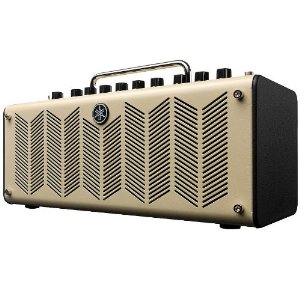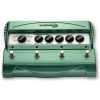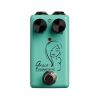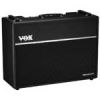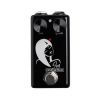Following on from the THR5 (see my review here) the Yamaha THR10 Modeling Combo Amp is larger and comes with a high-end, three-band equalizer (EQ) two key reasons why it sounds punchier. And there are some other features that may make it a better buy for some guitarists, even at around $80 more. This review focuses on the extra features of the Yamaha THR10 versus the THR5 we previously reviewed here.
The Yamaha THR10 is part of the THR range of amps designed for home studio use, with high-fidelity sound and the ability to be your recording studio. Importantly for guitarists, Yamaha’s Virtual Circuit Modeling provides realistic amp and effects simulations with excellent sonic and tonal quality allowing you to achieve authentic, classic sounds at domestic volume levels.
Both models come with the same built-in speakers and output power, Cubase AI and THR Editor software, classic amp emulations and various effects. The THR10 however also has separate Treble, Middle and Bass tone controls (3-band EQ) instead of just a single Tone control, the ability to save presets, three extra Amp settings and individual OUTPUT (volume) controls.
Click here to read more...- Five User Memory buttons for saving presets
- Three-band EQ and individual OUTPUT controls
- Slightly larger and heavier than THR5
The main thing about the Yamaha THR10 that grabbed my attention were the extra Amp settings Bass, Aco and Flat. Using these extra settings, means it will handle electric and acoustic guitars (Aco), bass guitar (Bass), keyboards and even vocals (Flat). You can plug just about anything in and play without having to muck around with setting up extra amps and gear. Play a standard 4-string bass through it and you get an astonishingly rich deep bass sound, add some flanger and reverb and you're in full-on funk territory. Plug in an electro-acoustic and change to Aco for an organic, clear tone courtesy of mic simulations and effects that have been optimized for acoustic. It would be hard to find another amp with this amount of flexibility. Once you've obtained a sound that you like, you can use one of the five User Memory buttons (not available on the THR5) located next to the power switch to save all of the control and switch settings to a preset. Then you can quickly change between your favorite sounds at the press of a button. The THR Editor software also contains 50 of Yamaha's own presets which can be assigned to User Memory buttons or use it to create, save and share presets of your own, or download and use ones created by others. Once you've created or downloaded a patch in THR editor just hold down one of the User Memory buttons on the amp itself to save it to the amp. Using the software this way allows you to achieve a vast array of effects settings and sounds that you would not be able to get with just the amp by itself.
With separate Treble, Middle and Bass tone controls (3-band EQ) on the Yamaha THR10 (the THR5 only has single Tone control) you can tweak the sound much more effectively, for example, if you want to scoop out mids. Individual OUTPUT (volume) controls for GUITAR and USB/AUX mean you can adjust the volume of your guitar relative to any music track you might be playing through the USB or AUX ports. The Yamaha THR10 is a little larger all round than the THR5 (14.2" W x 7.2" H x 5.5" D) and at around 6.2 pounds weighs nearly 2 pounds more, but it is still miles more portable than a lot of other combo, modeling amps that have less features and don't sound anywhere near as good.
It's not so much a question of whether to buy a THR, because the amps in this range fit perfectly as portable, home studio practice and recording solutions. More a matter of which one would suit best. I was blown away by the sounds and abilities of the simple, compact THR5 but having looked closer at the additional features, I would recommend the Yamaha THR10 as a better investment in the long run, even with its price roughly $80 more at around $270.
Click here to purchase this product on Amazon.
